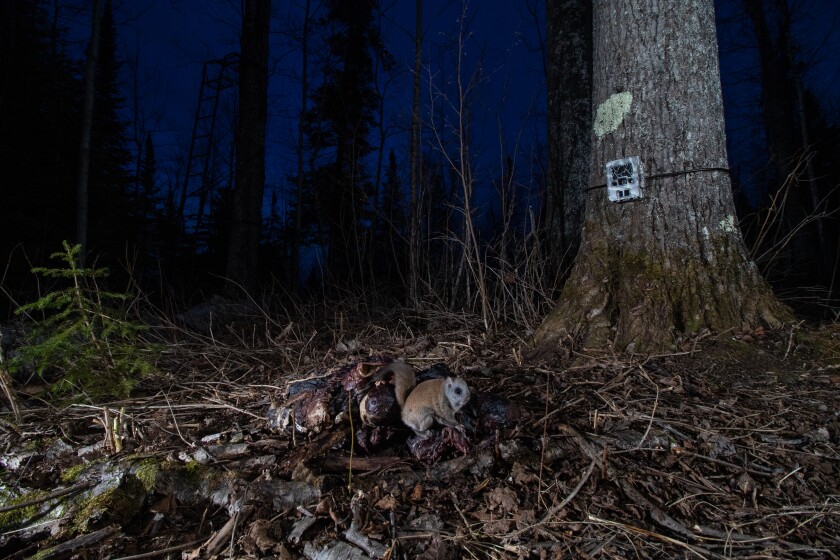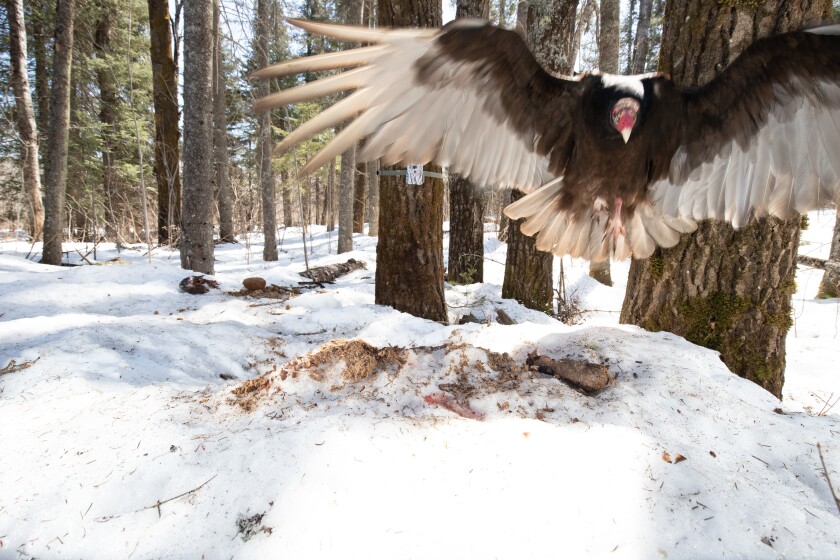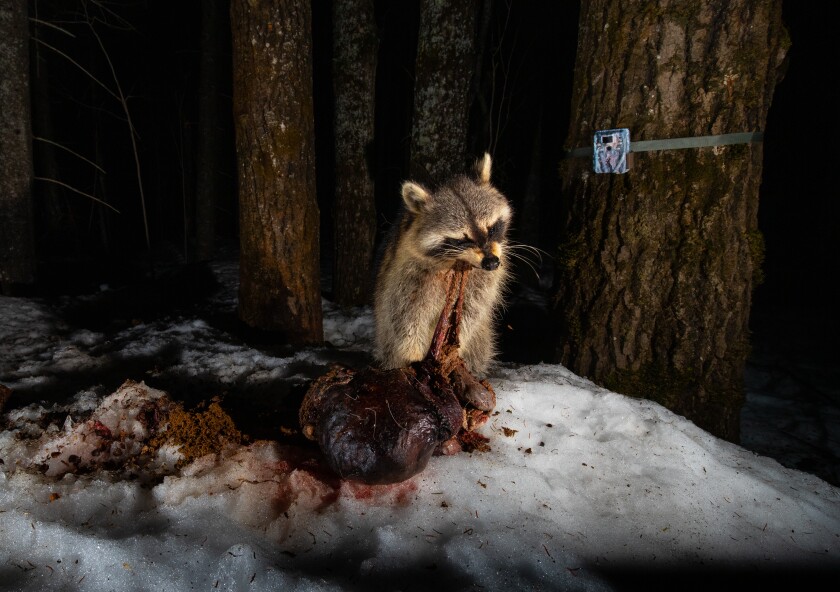WILLMAR — Science may not always be pretty, but it sure is interesting.
A case in point: Since 2018, researchers with the University of Minnesota have been asking hunters to point their trail cameras at the gut piles, or offal, from the deer they harvest.
ADVERTISEMENT
The “ ” has already turned up some surprising results.
This year a participant pointed out that the barred owl and bobcat visitors hanging around an offal site weren’t necessarily there for a free meal. They were smart enough to realize the offal served as bait to lure the small rodents they like to hunt.
“We would not have thought of this if he hadn’t given us a heads up,” said Grace Milanowski, a conservation biologist and coordinator working with the University of Minnesota Extension Offal Wildlife Watching Project team.

She is getting word out as the firearm season approaches to encourage more hunters to participate in this unique citizen science opportunity. It’s easy to do. Information on the website ( explains how to participate and even offers loaner cameras if needed.
The important piece is this: The cameras should be pointed at the new gut piles immediately. “We don’t want to miss a single visitor at that gut pile,” said Milanowski.
For good reason, as those early camera shots have already produced a surprise. Milanowski said the researchers figured that corvids, such as ravens and crows, and other bird species would be the first to find the gut piles. They thought that would especially be the case in prairie areas, where their eyesight and vantage point in the sky would allow birds to quickly spot the new piles in the open landscape.
It turns out, in prairie areas the piles are being discovered first of all by earth-bound carnivores. Elsewhere in the state, the birds are first.
ADVERTISEMENT

Researcher Ellen Candler with the university originally got this started in the hopes of answering some basic questions that can help in overall wildlife management in each of the state’s biomes.
One of the unique aspects is that this large amount of really nutritious and high-quality food is on the landscape for a relatively short time, Milanowski pointed out. Minnesota hunters harvested over 172,000 deer last year, with about 80 percent of them taken during the firearm season. What would happen if this big food source — that a lot of scavengers have come to expect — were suddenly stopped?
It is not just species we tend to think of as scavengers that benefit. The camera images analyzed to date have shown 50 different species visiting gut piles.
Some visitors are unexpected, such as flying squirrels and deer.
There are lots of deer captured on the images, said Milanowski. Deer can be omnivorous, and it appears they are visiting the offal for the protein they offer.

Other frequent visitors are no surprise. We’ve all seen eagles scavenging on carrion, and the cameras have captured images of many eagles feeding on gut piles.
So far, no images have been captured of lynx or mountain lions at gut piles in Minnesota, according to Milanowski. Those are the only big exceptions so far, she added.
ADVERTISEMENT
Hunters are asked to keep a camera pointed at a gut pile for one month. Many gut piles disappear in less than a month, but the scent remains and continues to attract visitors.
Since the program started, a variety of researchers have become interested in learning what this citizen science project can tell us about a wide range of issues, such as and other disease transmission in the wild.
To date, hundreds of thousands of images have been submitted. Candler has developed coding that helps filter out submitted images that are blank or show humans, said Milanowski. The remaining images are made available on , where volunteer, citizen scientists from around the world look each over and record the animals on them. Each photo is viewed by 10 different volunteers and reviewed by university staff. The program asks participants to record the GSI locations of their cameras, and the photos are date stamped.
The program has mostly enjoyed good participation from hunters, but there is a data gap in the southwestern corner of the state, according to Milanowski.
She said the team members hope to keep the program going for years to come. Funding from the has helped make this program possible.
Overall, the information the project is providing can be very helpful in managing and supporting our wildlife populations.
Milanowski said that most of those who participate do so out of curiosity. She also pointed out that hunters make good citizen scientists. Most are naturally good at observing and are naturalists at heart and enjoy spending time in the woods, she explained.
ADVERTISEMENT























